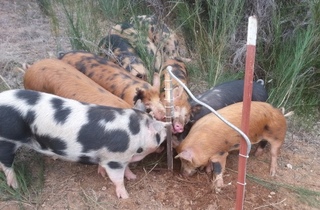 Pigs exhibiting their "Pig-isms" by rooting and digging next to the water source at SonRise Ranch. One element that gives our Pork a "clean" taste is Dirt - this allows them to practice their natural digging instincts and they love it! This is not possible on a concrete floor for obvious reasons.
Pigs exhibiting their "Pig-isms" by rooting and digging next to the water source at SonRise Ranch. One element that gives our Pork a "clean" taste is Dirt - this allows them to practice their natural digging instincts and they love it! This is not possible on a concrete floor for obvious reasons. You might think, as do I, that a Pork Chop is only a Pork Chop - I have a tendency to be somewhat of a reductionist. I'll often tell Jacob (our Ranch hand) to "just take some supplies up the hill and fix that fence." Jacob is a trooper, so a task like that even on a rainy day doesn’t seem to faze him. I will find myself feeding hogs a half hour later and wondering where he is; after all, I told him a whole 30 minutes ago to fix that darn fence - never giving a second thought to the fact that its easily a four-hour job.
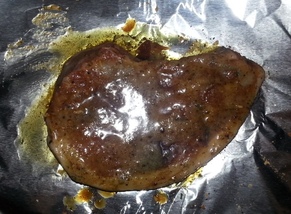 Free-range Chops rubbed in Ghee, Olive Oil, Worcestershire and Pepper
Free-range Chops rubbed in Ghee, Olive Oil, Worcestershire and Pepper For now, we are going to conquer this Pork Chop.
The first thing Eve does is locate some true Free-range, organic fed (that means no GMO's and no Soy) Pork - none of this is too hard for her, since she happens to be married to a Sustainable Rancher and critter grazer.... She then preheats our oven to 400 degrees (at our altitude of 1200 feet above sea level). No, we don’t go cut wood for this; we have a gas stove – life on the Ranch is not that archaic.
Eve washes the Chop in cold water to remove any blood and then pats it completely dry with a paper towel. Having prepared a series of foil squares large enough to completely wrap each Chop with the reflective side out, she places each Chop in its own bed of foil square.
As if washing pork wasn’t dirty enough, she uses her hands to prepare the Chops by adding one-half tablespoon of Grass-fed Ghee, one-half tablespoon of Organic Olive oil, and then one-half teaspoon of Worcestershire sauce on each side of the Chop, along with some citrus pepper (or another pepper of your choice) found at the local market. She rubs all this together to marinate the Chops, ensuring the meat is well coated with the mixture.
Resist the temptation to add salt; although it enhances the taste after cooking, it will tend to dry the Chop out during cooking.
She rubs each side thoroughly and wraps the foil around the Chops. She has tossed more than a few foil pieces in the trash getting this right - but they must have not a single puncture. Each chop, carefully wrapped, is placed on a cookie sheet, evenly spaced and the cookie sheet is then set in the middle of the oven.
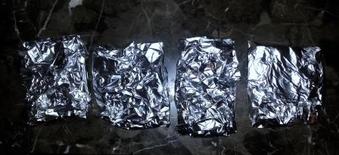 Wrapped Chops ready to go in the oven at 400
Wrapped Chops ready to go in the oven at 400 To get this just right, after about 35 minutes have passed she checks to see if they have reached an internal temperature of 145 degrees. Eve meticulously checks them by removing the chops from the oven, opening the foil of one and inserting a food thermometer into the middle of the chop about half way down into the meat, being careful to not puncture the bottom of the chop or the foil. If they are short of the required temperature, don’t lose faith - just replace them in the oven and recheck at 5 minutes intervals.
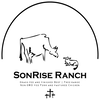
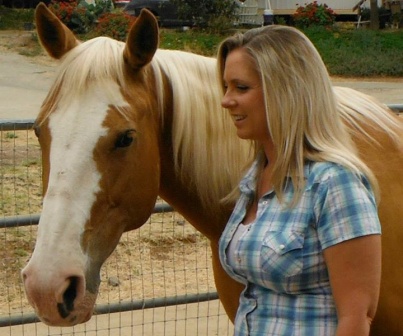
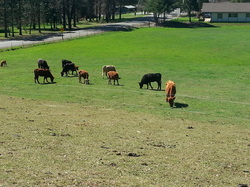
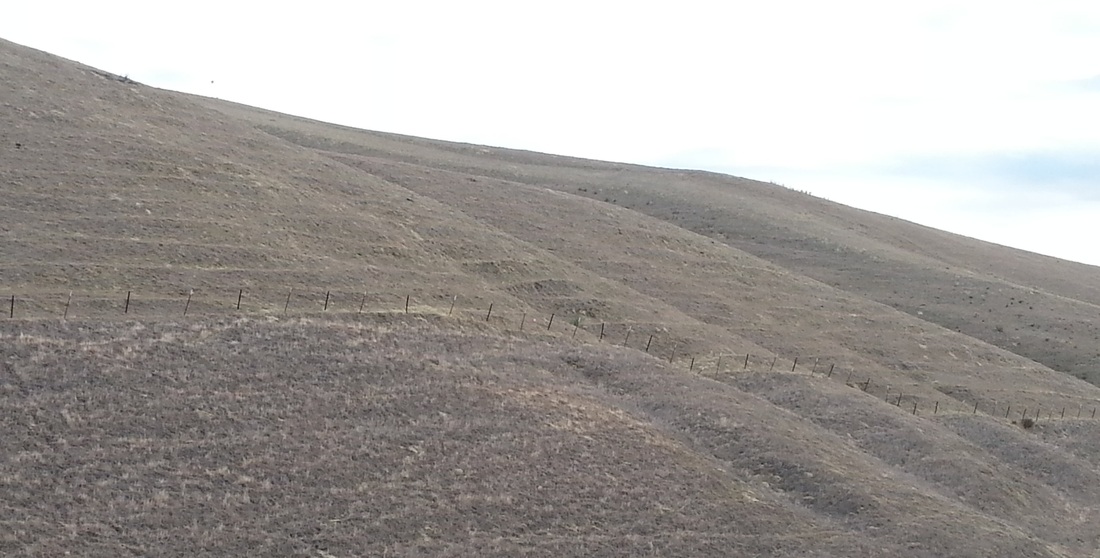
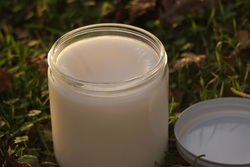

 RSS Feed
RSS Feed